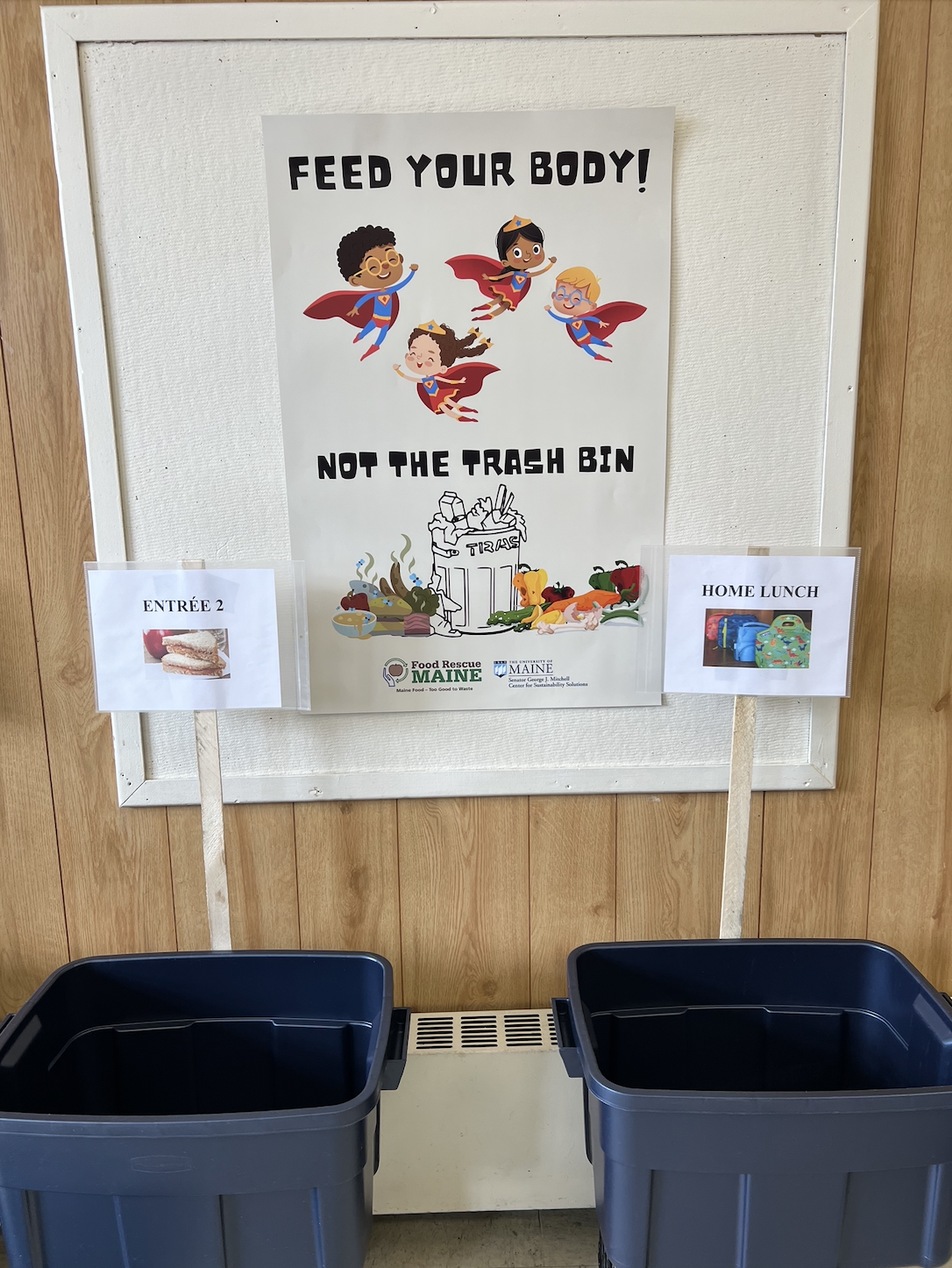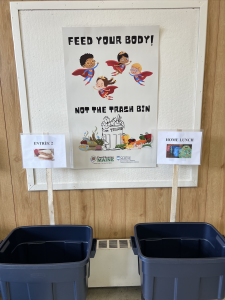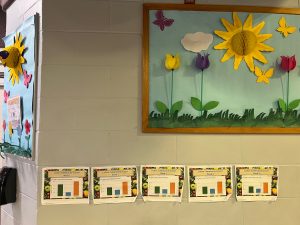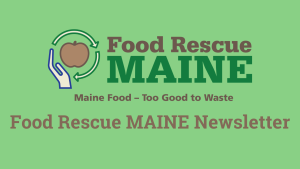
Pilot 4: Maine School Cafeteria Food Waste Study – 2023
Goals
- To reduce school food waste, volume, and cost.
- To improve nutrition intake.
Methodology
- Worked with the Maine Department of Education nutrition director and faculty team to identify the most effective food waste and nutrition interventions.
- Researched best practices for elementary school food waste reduction.
- Recruited and selected four (4) participating Maine elementary schools for the Study.
- Implemented School Cafeteria Food Waste Interventions:
- Prep For Study
- Prep school faculty/staff and cafeteria staff about School Food Waste Study.
- Prep kitchen for “offer versus serve” program.
- Replace disposable eating utensils with reusables.
- Sign-up food waste recycling hauler for weekly pick-up.
- Set up new cafeteria waste sorting stations with instructional signage (Find in Resources).
- Set up new cafeteria “Share Baskets.”
- Recruit food waste training, tracking and measuring student aides (4th and 5th-grade students).
- Take Baseline Assessments
- Take daily Week 1 food and liquid waste measurements to set a baseline.
- Conduct Week 1 Food Waste Nutrition Audit.
- Measure family baseline with Pre-Study Family Food Waste Survey.
- Track Food Waste Reduction
- Hold Week 2 Food Waste Education School Assemblies (15 minutes).
- Post four (4) Food Waste Education Cafeteria Posters (See image 1).
- Track daily Weeks 2-8 food and liquid waste measurements.
- Create individual school Weekly Food Waste Progress Charts (see image 2).
- Conduct Week 8 Food Waste Nutrition Audit.
- Measure family impact with Post-Study Family Food Waste Survey.
- Prep For Study
Results
Quantitative Data
All schools involved in the study experienced a reduction in their food waste over the study period. At the four schools, fruit and veggie waste was reduced by more than one-quarter. The reductions ranged from 24% to 64%.
Qualitative Data
Family Survey Results
- 53% of respondents reported their children talking to them about food waste after the study.
- 75% of respondents reported their family discussing food waste recently.
- “The biggest change is the reflection of my child’s own food choices and how much they serve themselves.”
School Cafeteria Interview Excerpts
- “Encourage food waste reduction by educating. I think that’s the biggest piece that we’re all missing. It’s the most important piece.” – Morgan Therriault
- “Not having liquid in the trash can make the bag much lighter. It makes my whole job easier.” – Aaron Putnam, Custodial Staff at Asa Adams Elementary
- “Allowing the student to choose which fruit or vegetable they wanted resulted in less waste because they picked something they likes and wanted to eat.” – Laurie Rufo, Kitchen Staff at Asa Adams Elementary
Resources
- Materials from the 2023 Maine School Cafeteria Food Waste Study:
- Waste Sorting Station Signage
- Share Basket Signage
- Food Waste Education Posters
- “Stop Food Waste/What is a Meal?” K-5 Assembly Slideshow – Contact us if you are interested!
- K-5 Student “Food Too Good to Waste” Poster Competition Sheet (Coming Soon!)

Image 1: Poster designed by student intern, Eddie Nachamie, in Sebago Elementary School cafeteria near food waste sorting stations.

Image 2: Weekly Progress Charts displayed in the Lisbon community school cafeteria.

